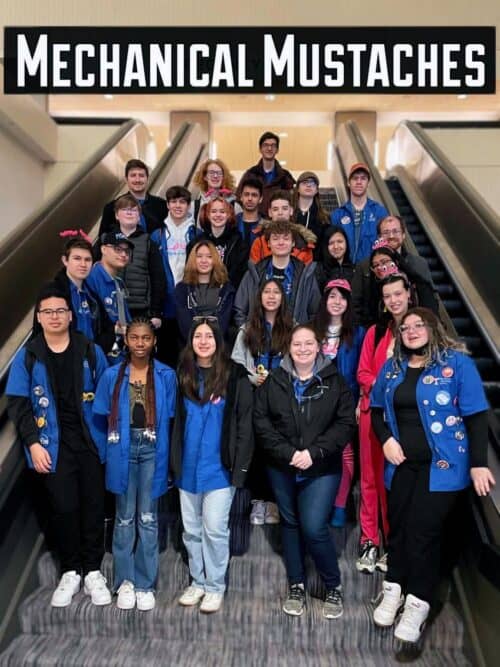6 Basic Sheet Metal Fabrication Techniques
Leave a CommentSheet metal fabrication is any process that involves assembling or manufacturing raw sheet metal. One or more fabrication processes can be used to produce the desired part, depending on the material and specifications of the project. Clients can choose from metal cutting, welding, bending, machining, punching, and stamping fabrication techniques to create their products. We will explore each metal fabrication technique to help you determine the ideal method(s) for your application.
Metal Stamping
Metal stamping fabrication works with various sheet metals. Galvanized alloys, brass, copper, aluminum, and stainless steel stamping can be used to deliver the desired result. Metal stamping is vital to manufacturing and assembling automotive components such as firewalls, doors, hubcaps, and trunk lids. Metal stamping lends itself well to custom designs and features, such as high-performance and specialty components.
Metal stamping encompasses more than punching holes in sheet metal with a die. When necessary, a stamp and die can lift a sheet metal section, creating raised letters, shapes, and images on the surface. This process works like woodworking and marble relief carving and is used in applications like minting coins.
Metal Cutting
Sheet metal cutting is often the first step in metal fabrication. Depending on the project specifications and thickness of the metal, a manufacturer chooses one of the following metal cutting methods:
- Water jet: A water jet cutter uses a high-powered water stream to cut metals of various thicknesses using a narrow, high-pressure water nozzle.
- Torching: A high-temperature flame from a cutting torch can cut metals prone to oxidization, including steel.
- Shearing: A sheet metal workpiece is placed flat and shears cut through it with two large scissor-like blades, pushing the workpiece toward the lower blade. Manufacturers can economically cut thin pieces of sheet metal with small manual shears.
- Sawing: Band and circular saws can cut sheet metal workpieces that are too thick for torches, water jets, and shears. Sawing is recommended for thick metal because it is time intensive.
Metal Welding
Welding metal involves joining sheet metal workpieces together by applying intense heat to bond the pieces. The welding method depends on the equipment available, the metal type, and the material’s thickness. Manufacturers perform sheet metal welding using the following popular methods:
- MIG welding: A type of arc welding that relies on a continuous wire electrode being fed through a welding gun to generate a welding pool. A shielding gas protects the weld pool from contamination.
- TIG welding: An electric arc travels through an infusible tungsten electrode to generate intense heat, fusing 8- to 10-mm thick metal sheets.
- Laser welding: A method that fuses sheet metal workpieces by melting and bonding the metal with a solid-state laser resonator. Laser welding delivers high-quality welds with consistency.
Metal Bending
Metal bending is a vital step of sheet metal fabrication. Sheet metal is bent using bending equipment like press brakes and rolling machines. Manufacturers rely on bending to shape the sheet metal into various products, such as by creating configurations like T-shaped corners and 90° angles.
Metal Machining
Machining is a subtractive manufacturing process that removes material from a workpiece to create a component. While manual machining is still common, computer numerical control (CNC) machining is increasingly popular due to its speed, consistency, and tight tolerances.
CNC turning and milling are the most common processes. Turning relies on a stationary, single-point cutting tool to remove material from a rotating workpiece. It is ideal for creating cylindrical pieces with high-precision external and internal elements. Milling removes excess material using a rotating multi-point cutting tool on a stationary workpiece to create a component from start to finish or as a secondary finishing process. Machining provides replicable, accurate, and precise material removal.
Metal Punching
Metal punching is a fabrication method that forms, cuts, and punches metal with a punch press as the workpiece passes through it. A metal punching tool combined with a die set offers the versatility to create custom metal workpieces out of various metals. It is a cost-effective and efficient solution for high-volume production.
Sheet Metal Fabrication From Manor Tool
Sheet metal fabrication involves six main techniques that can be used separately or in combination to produce the desired part. With over six decades of experience, Manor Tool serves various industries with quality metal stamping and fabrication from our Illinois facility. Contact us or request a quote to discuss your sheet metal fabrication needs.
Manor Tool and Mechanical Mustaches Robotics Team
Leave a CommentManor Tool & Manufacturing is passionate about meeting the needs of our clients, no matter how many components they need or how unique the end-use application is. Recently, we collaborated with the Chicago, IL, Taft High School robotics FRC team, the Mechanical Mustaches, to fabricate a component for their robot.
The Mechanical Mustaches had an upcoming regional competition in Wisconsin and needed to build a large and powerful robot. Manor Tool worked with the team to develop and fabricate a part that met all their performance requirements, with delivery that met their timeline requirements. The team’s instructor Anthony Schmidt said in an interview with the Technology & Manufacturing Association that their robot performed well in the Wisconsin FIRST® Regional.
Robotics FRC Team
The Mechanical Mustaches are an FRC team, which stands for FIRST® Robotics Competition. FIRST is a global organization that encourages students to build their technological and scientific skills. The acronym is an abbreviation of “For Inspiration and Recognition of Science and Technology.” The organization holds an annual international competition among high school students to build robots that compete in field events involving tasks like balancing on beams, holding onto bars, and other challenges.
To enter this competition, Taft High School’s robotics FRC team needed to build a robot that weighed up to 150 lbs and was upwards of 6 ft. tall. It required a significant amount of design and programming skills to bring the project to life, including a variety of high-quality stamped metal parts. After collaborating with Manor Tool to obtain a specialized component, the robot was completed and was fit to compete in this prestigious competition.
Metal Stamping with Robotic Automation from Manor Tool
At Manor Tool & Manufacturing Company, whether you need to develop a single part or a large production run, we can fabricate your component quickly and cost-effectively using our robotic automation tools. We deploy a robotic arm to automate the movement of stamped parts as they move among various machines during the fabrication process.
We used this technology during our project for the robotics FRC team. The process is as follows:
- First, raw material is fed into a press for the initial metal stamping.
- After the part is formed, it slides down a chute and is inspected by a vision system for accuracy.
- Next, a robotic arm picks up the part and places it on the die in the second press where the final stamping is performed.
- Finally, the robotic arm separates the finished part from the scrap material.
Our automation technology significantly reduces cycle times and allows us to produce as many as 500,000 stamped parts annually. For customers like the Mechanical Mustaches, it ensures they receive their part as fast as possible, and at a highly competitive price.
Metal Stamping from Manor Tool & Manufacturing Company
Since 1959, Manor Tool has been fabricating expertly-crafted metal components. We specialize in bending, punching, forming, and deep-drawn stampings as well as hard tooling. After every production run, we conduct die maintenance within our facilities and carry out inspections on every component to ensure reliability in the process and quality. You can learn more about our die maintenance process on our website. If you have any questions, reach out to our team.





